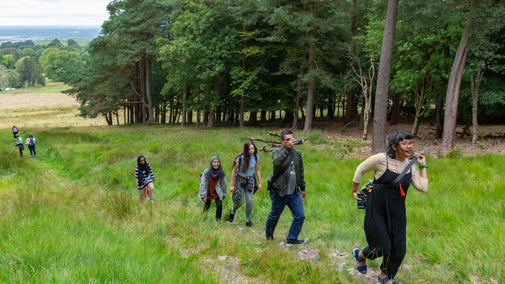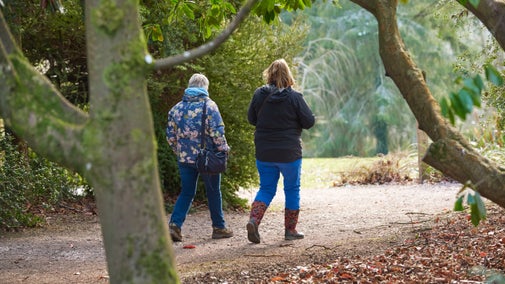Combe Woods and wild flowers walk
Devon
You can enjoy this circular walk around Combe Wood at any time of the year but the route is at its very best during bluebell season in early May.
Near to
Sidmouth countrysideStart point
Combe Wood lay-by, grid ref: ST161016Trail information
More near here
Salcombe Hill accessible walk
This short, accessible walk takes you along well-maintained gravel paths up to the Salcombe Hill toposcope. Enjoy far-reaching views across Sidmouth, High Peak, Ladrum Bay and beyond from one of the clifftop benches.

Salcombe Views and Valleys Walk
Follow the Salcombe Hill circular walk trail in Devon for views of the Jurassic Coast UNESCO World Heritage Site cliffs and valleys and to the Weston Plats for its 19th-century cliff allotments.

Salcombe Hill Circular Walk
Enjoy incredible views on this gentle walk around Salcombe Hill in Devon.

Salcombe Hill to Sidmouth circular walk
Starting with views across the Sid valley, this 5 mile circular walk showcases the regency town of Sidmouth, and then takes you upriver through a tranquil riverside park.

Get in touch
Our partners

We’ve partnered with Cotswold Outdoor to help everyone make the most of their time outdoors in the places we care for.
You might also be interested in
Walking
Explore some of the finest landscapes in our care on coastal paths, accessible trails, woodland walks and everything in between. Find the best places to walk near you.

Walking in Devon
From rugged coastline with captivating views to gentle woodland strolls, these are some of the best walks in Devon this winter.

Things to see and do in the Sidmouth countryside
With gentle countryside walks and coastal hikes to follow, flora and fauna to spot, and places to run, the Sidmouth countryside has plenty on offer year-round.

Visiting Sidmouth countryside with your dog
Find out about visiting Sidmouth countryside with your dog, from where you can and can’t take them, to the facilities available for dog owners. Sidmouth countryside is a one pawprint rated place.

Follow the Countryside Code
Help to look after National Trust places by observing a few simple guidelines during your visit and following the Countryside Code.

Staying safe at National Trust places
The special places in National Trust care sometimes come with a few risks for visitors, be it coastline or countryside. Find out how to keep safe throughout your visits.

Cotswold Outdoor: our exclusive walking partner
Learn about the National Trust’s ongoing partnership with Cotswold Outdoor. Find out how they help us care for precious places and the exclusive discount available for National Trust supporters.

